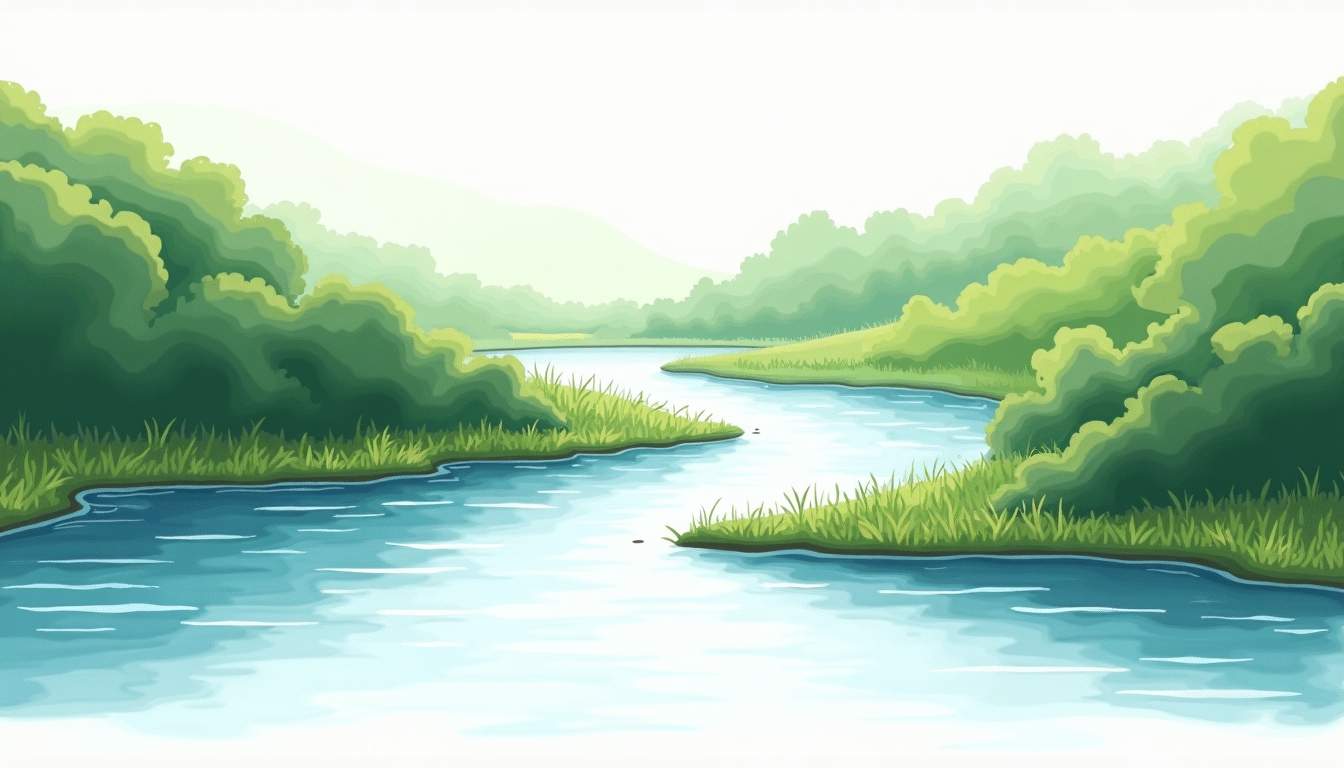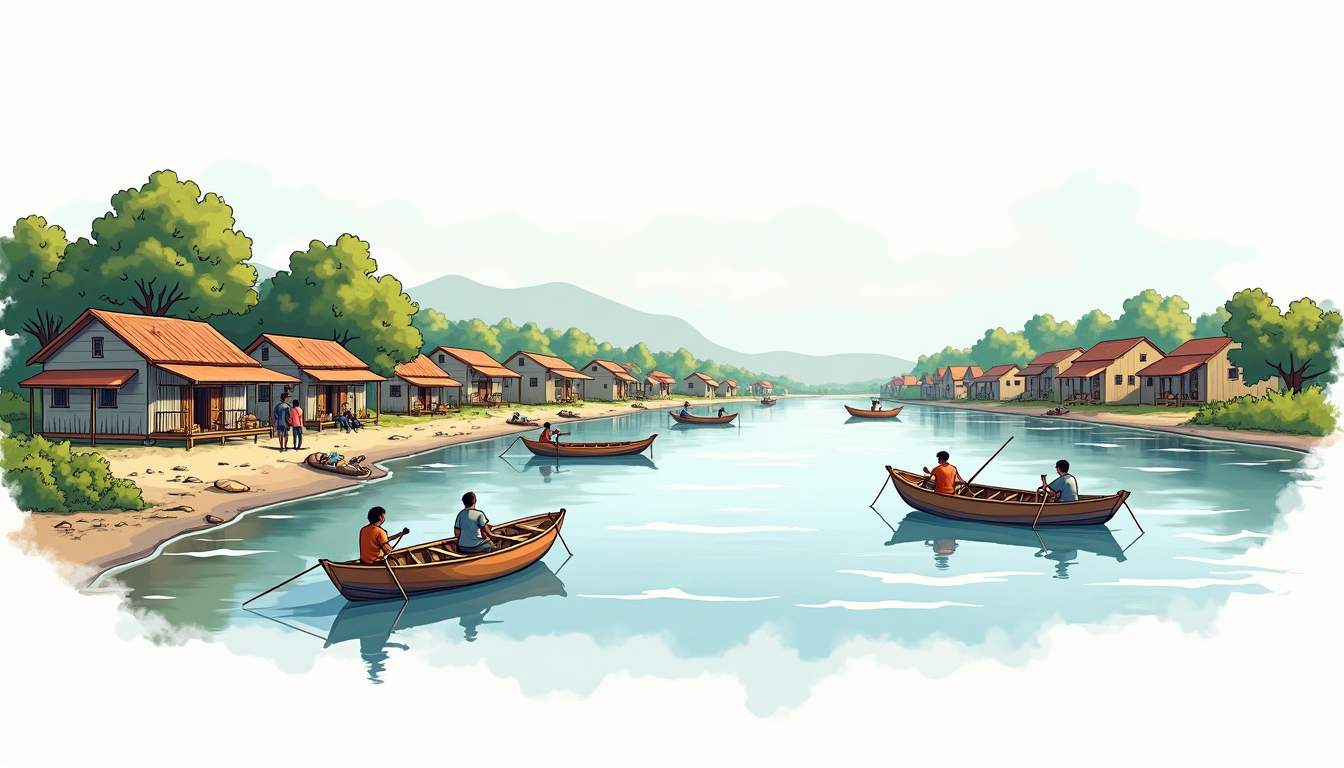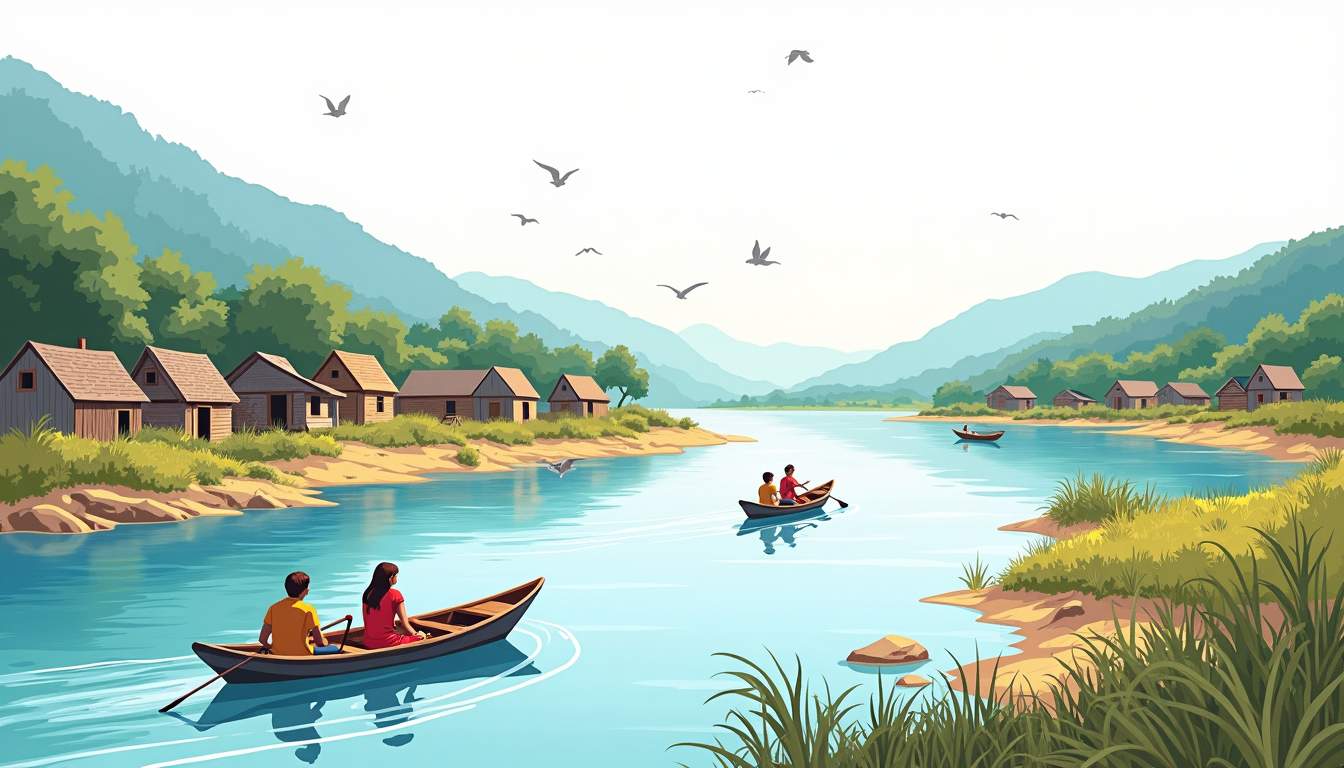
Water moves, and where it moves, life follows. Rivers, lakes, estuaries and coastal shelves are more than surfaces and depths; they are stages for daily routines, livelihoods, migrations and quiet mysteries. The presence of water shapes how communities live, work and imagine the future. This article explores the rhythms of life that owe their existence to the flow, from the eddies of city canals to the broad sweep of tidal estuaries, and considers both the resilience and the vulnerability of these watery worlds.
Flow is not only a physical phenomenon; it is a pulse that sets schedules and expectations. Fisherfolk time their nets by tides, farmers irrigate according to seasonal floods, and migratory birds follow currents and thermal updrafts. The movement of water organizes activity in predictable ways, making calendars out of currents and tides.
Those who live by water learn to read subtle changes. A shift in the smell of the air, the angle of morning light across a bay, or a slight lowering of water levels can mean a change in fish behavior or an approaching storm. Over generations, these observations become embedded knowledge, a language of indicators passed from one set of hands to the next.
Tides mark the most immediate rhythm for coastal communities: a daily swapping of shore and sea that opens and closes access to resources. Beyond daily ebb and flow are seasonal events—snowmelt raising rivers, monsoon rains swelling deltas, and dry seasons contracting lakes. Each layer of time creates windows for spawning, planting and harvesting, and failure to align human activity with these windows can have cascading consequences.
Moreover, these natural cycles not only dictate practical timing but also shape cultural rituals and spiritual life. Festivals and ceremonies often coincide with significant flow-related events, such as the high tide of a full moon or the first floodwaters after winter thaw. This intertwining of ecology and culture deepens the human connection to flow as a living, dynamic force.
Ocean currents and river channels serve as natural highways for both living creatures and ideas. Historically, trade routes followed currents and wind patterns; seeds and species spread along waterways. In modern times, shipping lanes still depend on predictable flows, while migratory species use these same pathways to complete life cycles. The metaphor of flow as a connector is literal and enduring.
In addition to facilitating movement, these channels influence the diffusion of languages, technologies, and cultural practices—acting as conduits in an ever-changing network of exchange. Scientists now study how alterations in flow patterns, driven by climate change or human intervention, could disrupt these intricate webs, highlighting the profound importance of maintaining healthy, continuous flows for ecological and social resilience.
Communities that live on or by water exhibit a remarkable diversity of adaptations. Some settle on stilts above floodplains, others build floating homes that rise with the tides. In densely populated deltas, entire neighborhoods can be defined by canals and piers rather than streets and sidewalks. Architecture and infrastructure become responses to constant motion.

Designs that accommodate changing water levels are increasingly common in regions where floods are regular. Floating schools, homes built on barges and amphibious foundations that rest on dry ground but float when water rises all reflect a pragmatic and creative engagement with variable environments. This kind of architecture reframes flooding from catastrophe to manageable condition.
Where waterways are primary thoroughfares, markets and services follow. Floating markets and waterborne vendors move goods and stories as easily as fish and fruits. Mobility becomes a cultural feature: boats are not just transport but social spaces, places of negotiation, recreation, and connection. The motion of trade reinforces social networks along the banks and across the waves.
Water is an economic engine for many communities. Fisheries, aquaculture, tourism, transport, and energy generation are sectors built directly upon aquatic resources. The dependence is both an opportunity and a vulnerability, requiring careful stewardship and often innovation to maintain productivity.

Local fisheries provide sustenance and income for millions worldwide. Small-scale fishers rely on intimate knowledge of breeding seasons and feeding grounds, while larger commercial fisheries depend on technology and capital. Aquaculture has emerged as a way to supplement wild catches, raising fish, shellfish and sea vegetables in controlled systems. Each approach carries trade-offs for ecosystems and communities.
Beaches, riverfront promenades and scenic canals attract visitors whose spending supports local businesses. Cultural practices tied to water—boat festivals, ceremonial river cleansings, and regattas—become both tourist attractions and expressions of identity. Balancing visitor demand with the preservation of local customs and natural resources is a recurring challenge.
Water ecosystems are mosaics of interdependence. Wetlands filter pollutants and act as nurseries for fish; mangroves stabilize shorelines and feed coastal food webs; river floodplains recharge aquifers and support diverse plant communities. Disrupt one link in the chain and effects reverberate widely.
Shallow waters and vegetated margins play outsized roles in ecological health. Seagrass beds and marshes trap sediments, improving water clarity and providing habitat for juvenile species. These areas also sequester carbon and mitigate the impact of storm surges, acting as natural infrastructure that reduces the need for built defenses.
Many species depend on connected waterways to complete life cycles: salmon swim from ocean to freshwater to spawn, juvenile crabs use estuaries as sheltered feeding grounds, and sea turtles return to natal beaches. Maintaining connectivity—unblocked channels, healthy estuaries—is essential for these migrations to continue unhindered.
Water is a powerful symbol in many traditions, associated with cleansing, renewal and transformation. Rituals performed at rivers, lakes and coasts reflect deep spiritual and communal meanings, shaping calendars and identities in ways that persist even as societies modernize.
Seasonal festivals often coincide with cycles of abundance: harvests of fish, the coming of monsoon, or the morning of a particularly bountiful tide. These events reinforce bonds between people and place, offering both celebration and a communal reminder of dependence on the natural world.
Oral histories and place names frequently encode ecological knowledge: the name of a bay might point to abundant shellfish, while a river's legend warns of dangerous currents. Such stories work as practical guides and as cultural glue, connecting younger generations to the landscapes that sustain them.
The systems that support life on water are under pressure. Urban expansion hardens shorelines, pollution alters chemistry, overfishing depletes stocks, and climate change shifts patterns of rainfall and sea level. These forces interact in complex ways, often intensifying each other's impacts.
Runoff from agriculture, untreated sewage and industrial discharge change the nutrient balance of waterways, causing algal blooms, hypoxia and mortality among sensitive species. Physical alterations—dredging, land reclamation and dam building—fragment habitats and disrupt migration routes. Restoring water quality and connectivity is a long-term effort that requires coordinated policy and local engagement.
Rising seas, shifting rainfall regimes and more intense storms increase the frequency of floods and droughts, testing the resilience of water-dependent communities. Traditional timing of activities can be upset by altered seasons, forcing adjustments in livelihoods that are not always feasible without external support.
Communities and governments are experimenting with ways to live with changing water dynamics. Some approaches revive traditional knowledge; others apply modern engineering or market-based incentives. The most effective strategies often blend ecological understanding with social equity.
Local stewardship initiatives protect spawning grounds, restrict damaging practices and monitor water quality. When communities have authority and economic incentives to manage resources sustainably, compliance and outcomes improve. Co-management arrangements between governments and local groups are gaining traction in many regions.
Restoring wetlands, replanting mangroves and creating living shorelines harness natural processes to provide flood protection, habitat and carbon sequestration. Nature-based solutions are frequently more cost-effective and adaptable than hard infrastructure, especially when paired with community participation and long-term planning.
Resilience in water-based landscapes requires flexible planning, attention to local knowledge and willingness to experiment. Policies that integrate land-use planning, climate projections and community needs stand a better chance of supporting both biodiversity and human well-being.

Rather than one-size-fits-all solutions, incremental approaches allow adaptation as conditions change. Policies that prioritize mobility—movable infrastructure, modular housing and flexible transport—reduce risk while keeping options open. Transparent decision-making builds trust and makes trade-offs easier to manage.
Investing in ecological education and intergenerational transmission of local knowledge strengthens community capacity to respond to change. When elders, fishers and young people share observations and experiment with new practices, the resulting hybrid knowledge systems are often more robust than either tradition or science alone.
The flow of water shapes landscapes, livelihoods and lives in ways that are both visible and subtle. Respecting that flow—learning from it, adapting to it and protecting the systems it sustains—creates a foundation for healthier ecosystems and more secure communities. The relationship between people and water is reciprocal: when water is allowed to move and breathe, communities prosper; when it is constricted and contaminated, everyone pays the price.
Living well on the water is not about resisting change but about tuning to patterns, balancing use with renewal, and building institutions that are responsive to both immediate needs and long-term cycles. The future of water-centered life depends on choices made today: choices that recognize flow as a force to work with, not only to control.
Just as the flow of water shapes vibrant communities and nurtures connection, Tennessee National invites you to experience a lifestyle harmonized with nature’s rhythms. Settle into luxury within our gated community, where waterfront living, a Greg Norman Signature Golf Course, and countless amenities offer a place to thrive. Discover your perfect home amidst scenic trails and welcoming social clubs—schedule a private tour today and start making memories that move with the flow of life.